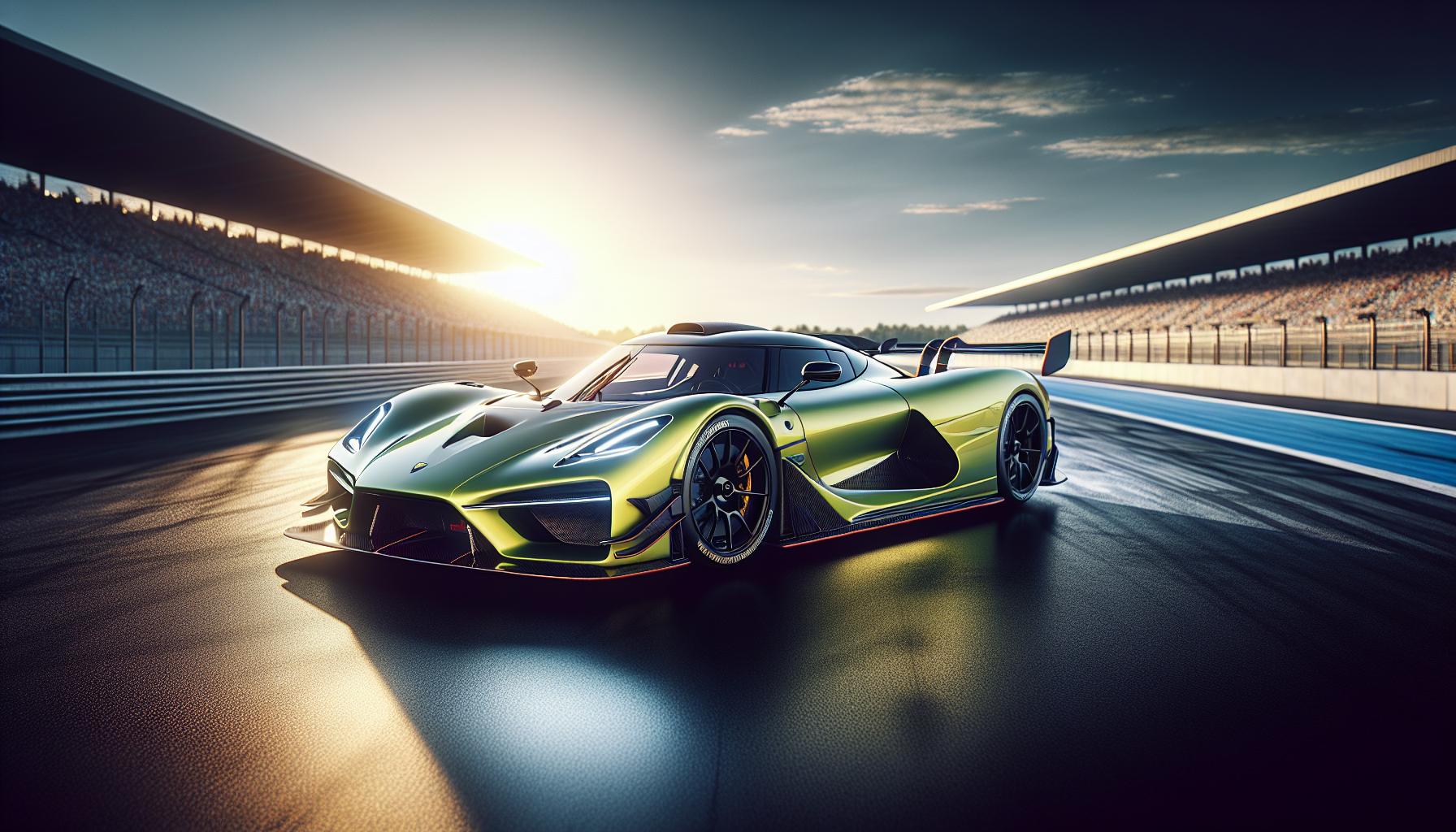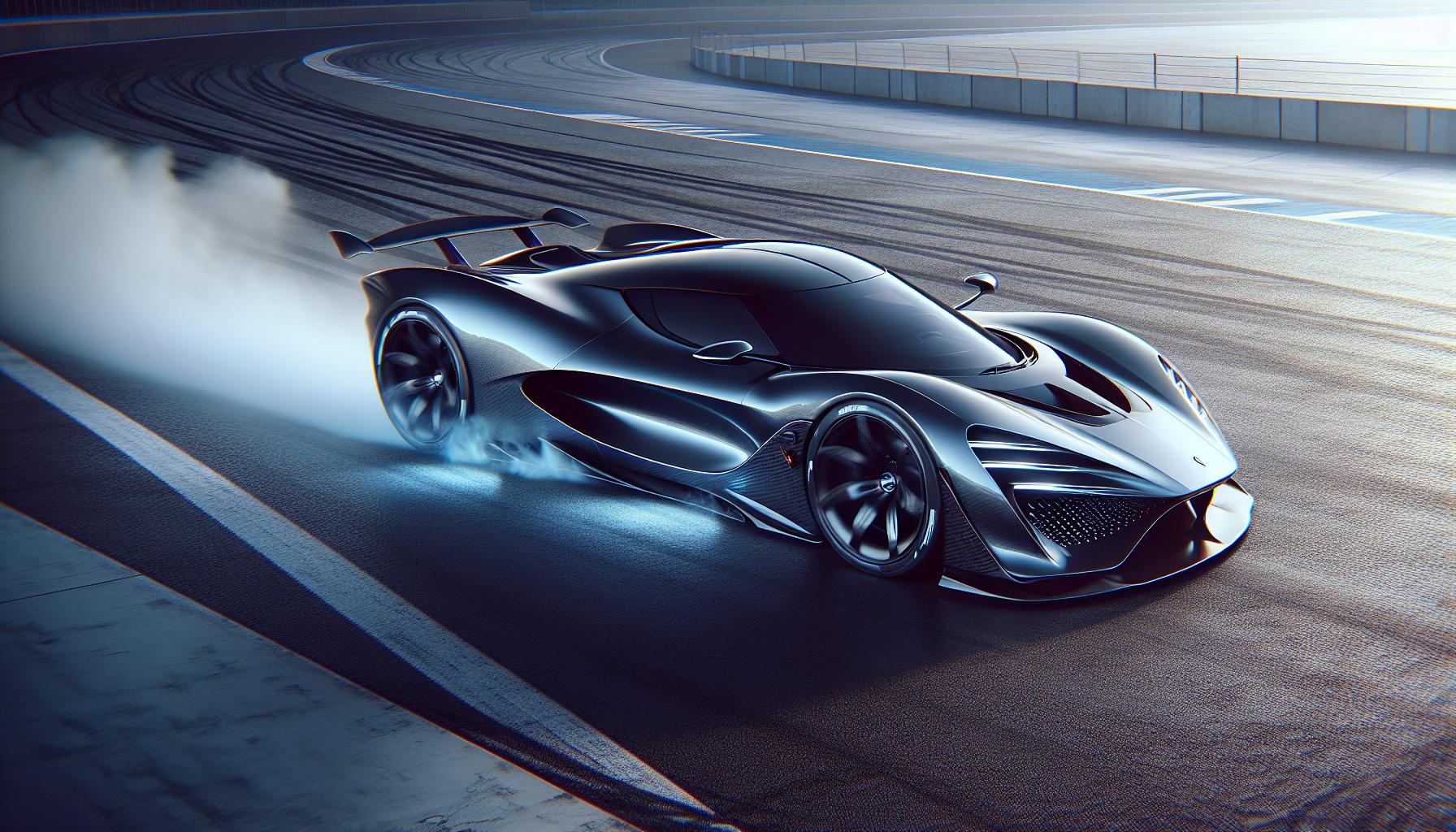When it comes to high-performance automobiles, few things match the raw excitement of esportivo cars. These sleek machines represent the perfect fusion of power, precision engineering and pure adrenaline-pumping thrills that car enthusiasts crave.
The world of esportivo vehicles has evolved dramatically since the early days of motorsport. Today’s models blend cutting-edge technology with aggressive styling and race-inspired features that make everyday driving feel like a lap around the track. From Italian stallions to German engineering marvels, these automotive masterpieces continue to push the boundaries of what’s possible on four wheels.
Esportivo:6dapverkrre= Carros
Sports cars represent the pinnacle of automotive engineering, combining performance, design, and advanced technology. Raw power output ranges from 300 to 700+ horsepower in modern sports cars through turbocharged or naturally aspirated engines. Aerodynamic elements like rear spoilers, diffusers, and front splitters enhance stability at high speeds.
Key characteristics differentiate sports cars from standard vehicles:
- Lightweight construction using carbon fiber, aluminum or composite materials
- Low center of gravity for enhanced cornering ability
- High-performance brake systems with multi-piston calipers
- Sport-tuned suspension systems with adjustable damping
- Advanced transmission systems, including dual-clutch automatics or manual gearboxes
Performance metrics showcase sports car capabilities:
| Metric | Typical Range |
|---|---|
| 0-60 mph | 2.8-4.5 seconds |
| Top Speed | 155-205 mph |
| Braking 60-0 mph | 95-105 feet |
| Lateral G-force | 0.95-1.2 G |
Modern sports cars integrate sophisticated technology:
- Launch control systems for optimal acceleration
- Variable driving modes adjusting engine response throttle mapping
- Active aerodynamics that automatically adjust based on speed
- Torque vectoring systems for improved handling
- Advanced traction control with electronic stability programs
These vehicles feature distinctive design elements:
- Streamlined body shapes with low drag coefficients
- Wide wheel arches housing performance tires
- Hood scoops air intakes for engine cooling
- Aggressive front fascias maximizing airflow
- Short overhangs improving weight distribution
Sports cars emphasize driver engagement through responsive steering direct throttle response enhanced feedback systems. Manufacturing processes incorporate precision engineering hand assembly specialized components ensuring optimal performance characteristics.
Key Features of High-Performance Vehicles

High-performance vehicles combine advanced engineering with precision components to deliver exceptional driving dynamics. These machines showcase cutting-edge technology across every aspect of their design.
Engine and Power Specifications
High-performance engines deliver impressive power output through advanced engineering solutions. Modern sports car powertrains feature twin-turbocharged V8 or V12 engines producing 500-789 horsepower. Direct fuel injection systems optimize fuel delivery while variable valve timing enhances engine response. The powertrain includes dual-clutch transmissions offering shift times of 50-100 milliseconds. Engine blocks incorporate lightweight materials like aluminum alloys reducing overall mass by 15-20%. Forced induction systems generate 14-22 PSI of boost pressure maximizing power density. Advanced cooling systems maintain optimal operating temperatures through multiple radiators water-to-air intercoolers.
Aerodynamic Design Elements
Sports cars incorporate active aerodynamic features that generate significant downforce at high speeds. Front splitters channel air underneath the vehicle creating a low-pressure zone. Rear diffusers manage airflow exit producing 30-40% of total downforce. Retractable rear wings adjust automatically based on speed vehicle dynamics. Side skirts prevent unwanted air from entering wheel wells reducing turbulence. Carefully sculpted body panels achieve drag coefficients between 0.28-0.35. Integrated cooling ducts direct airflow to critical components like brakes engines. Active front grille shutters optimize aerodynamic efficiency by closing at high speeds. Wind tunnel testing validates designs through 150+ hours of refinement ensuring optimal performance characteristics.
Popular Sports Car Manufacturers

Leading sports car manufacturers combine advanced engineering with distinctive design philosophies to create vehicles that define automotive excellence. These brands consistently push performance boundaries through innovation and precision craftsmanship.
European Luxury Brands
Porsche stands at the forefront of European sports car manufacturing with iconic models like the 911 GT3 generating 502 horsepower. Ferrari crafts exclusive vehicles in Maranello, Italy, producing the F8 Tributo with a twin-turbocharged V8 engine delivering 710 horsepower. Lamborghini specializes in extreme performance cars, highlighted by the Huracán STO reaching 0-60 mph in 2.8 seconds. McLaren demonstrates British engineering excellence through the 720S model featuring a carbon fiber monocoque chassis. Aston Martin combines luxury with performance in the DBS Superleggera, generating 715 horsepower through its V12 engine.
Japanese Performance Leaders
Toyota’s Gazoo Racing division produces the GR Supra, featuring a BMW-sourced inline-six engine generating 382 horsepower. Nissan continues its performance legacy through the GT-R NISMO, delivering 600 horsepower with advanced all-wheel-drive technology. Honda’s NSX represents precision engineering with its hybrid powertrain producing 573 combined horsepower. Lexus crafts the RC F with naturally aspirated V8 power, generating 472 horsepower. Mazda maintains its sports car heritage through the MX-5 Miata, emphasizing lightweight design with perfect 50:50 weight distribution.
| Manufacturer | Model | Horsepower | 0-60 mph |
|---|---|---|---|
| Porsche | 911 GT3 | 502 | 3.2s |
| Ferrari | F8 Tributo | 710 | 2.9s |
| McLaren | 720S | 710 | 2.8s |
| Nissan | GT-R NISMO | 600 | 2.9s |
| Honda | NSX | 573 | 2.9s |
Modern Sports Car Technology

Sports car technology integrates cutting-edge innovations that enhance performance, safety, and driver experience. Advanced systems optimize vehicle dynamics while maintaining the pure driving essence that enthusiasts demand.
Advanced Driver Assistance Systems
Modern sports cars feature sophisticated driver assistance technologies that enhance safety without compromising performance. Adaptive cruise control systems maintain precise distances from other vehicles at high speeds through radar and camera sensors. Lane departure warning systems use optical recognition to monitor road markings and alert drivers during aggressive cornering. Collision avoidance technology incorporates predictive algorithms to detect potential hazards, automatically adjusting brake pressure and steering response. Dynamic stability control monitors lateral g-forces, wheel slip, and yaw rates to optimize traction in varying conditions. Blind spot monitoring systems utilize ultrasonic sensors to detect vehicles in hard-to-see areas during high-speed maneuvers.
Performance Enhancement Features
Launch control systems optimize acceleration by managing engine RPM, clutch engagement, and wheel spin for consistent high-performance starts. Active aerodynamic elements adjust automatically based on speed, creating additional downforce when needed. Advanced torque vectoring systems distribute power between wheels to maximize cornering grip and stability. Adaptive suspension technology adjusts damping rates in milliseconds based on road conditions and driving mode selections. Performance data recorders capture lap times, g-forces, and engine parameters for driver analysis and improvement. Configurable drive modes alter throttle response, steering weight, and transmission shift points to match different driving scenarios. Carbon ceramic brakes provide consistent stopping power under extreme temperatures during track use.
Buying a Sports Car: Essential Considerations
Sports car ownership demands careful evaluation of multiple factors beyond the initial purchase price. The decision to acquire a high-performance vehicle involves balancing financial commitments with performance expectations.
Cost of Ownership
Sports car ownership expenses extend far beyond the purchase price. Insurance premiums for high-performance vehicles range from $2,500 to $5,000 annually due to increased risk factors. Maintenance costs average $2,000 to $4,000 per year for routine services, with specialized parts costing 3-4 times more than standard vehicles. Fuel consumption rates typically range from 15-22 mpg, requiring premium gasoline that costs 20-30% more than regular fuel. Tire replacements occur every 15,000-20,000 miles, with performance tires costing $250-500 each. Depreciation rates average 15-20% annually for luxury sports cars, though limited-edition models maintain value better.
Performance vs Practicality
Sports cars prioritize dynamic driving experiences over everyday utility. Cargo space averages 5-10 cubic feet compared to 15-20 cubic feet in standard sedans. Interior configurations typically accommodate 2 passengers with minimal storage options. Ground clearance measures 3-5 inches lower than conventional vehicles, limiting accessibility on uneven terrain. Daily fuel efficiency decreases 30-40% during performance driving scenarios. Limited rear visibility affects parking maneuverability in urban environments. Weather performance requires additional considerations, with many owners storing vehicles during adverse conditions to protect their investment.
Future of Sports Cars
Sports cars continue to evolve through groundbreaking technological advancements and shifting market demands. These innovations reshape performance capabilities while maintaining the thrilling driving experience enthusiasts crave.
Electric and Hybrid Models
Electric sports cars deliver instant torque with zero emissions, achieving 0-60 mph acceleration times under 2.5 seconds. Models like the Rimac Nevera generate 1,914 horsepower through quad electric motors, while the Porsche Taycan Turbo S produces 750 horsepower with dual motors. Hybrid powertrains combine combustion engines with electric motors, exemplified by the Ferrari SF90 Stradale’s 986 horsepower system. Advanced battery technologies enable ranges exceeding 300 miles per charge in premium electric sports cars. Regenerative braking systems recover energy during deceleration, extending range during performance driving.
Autonomous Capabilities
Modern sports cars integrate Level 2 autonomous features without compromising driver engagement. Advanced driver assistance systems include adaptive cruise control with stop-go functionality track recognition technology. The latest models incorporate AI-powered cornering assistance that analyzes road conditions 50 times per second. Camera based systems monitor steering inputs vehicle positioning to optimize performance through corners. Enhanced safety features like automatic emergency braking forward collision warning operate at speeds up to 155 mph. Manufacturers program autonomous systems specifically for track use, allowing drivers to improve lap times through data-driven coaching.
Sports cars represent the pinnacle of automotive engineering where passion meets performance. Their evolution from pure racing machines to sophisticated road vehicles showcases humanity’s endless pursuit of automotive excellence. Today’s esportivo cars blend cutting-edge technology with timeless design principles to deliver unmatched driving experiences.
As the automotive industry embraces electrification and autonomous capabilities these high-performance vehicles continue to push boundaries. While maintaining their thrilling nature they’ve adapted to modern demands for efficiency and safety. The future of sports cars looks promising as manufacturers innovate to create even more exceptional driving machines that capture the hearts of enthusiasts worldwide.

